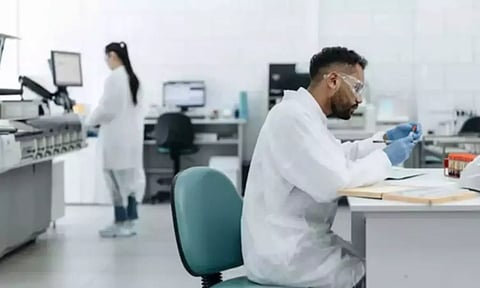

TOKYO: Researchers from Osaka University have discovered a novel treatment strategy for cytokine storm, a serious inflammatory syndrome triggered by an infection or severe burn.
Cytokines are chemical messengers that help the body eliminate germs and viruses while also controlling inflammation. They are carefully balanced by the body to help keep the immune system healthy. However, this balance is disrupted if the immune system overreacts.
A serious infection or a severe burn can unleash a cytokine storm in the body. During the storm, also known as cytokine release syndrome (CRS), the body overproduces cytokines, causing life-threatening inflammation.
Interleukin-6 (IL-6) is an important cytokine in the storm because it promotes inflammation that harms the body. IL-6 delivers its message by binding to IL-6 receptors inside cells, instructing them to propagate inflammation. Because IL-6 plays a crucial role in CRS, therapies that inhibit the IL-6 signal can reduce inflammation.
However, this blockage is typically long-lasting, resulting in adverse consequences.
In a study published in the Proceedings of the National Academy of Sciences (PNAS), Osaka University researchers developed a strategy to suppress IL-6 signals while minimising treatment negative effects. The researchers used an antibody that briefly inhibits the IL-6 receptor to stop the inflammatory signal. The brief pause was sufficient to protect the tissues from cytokine storms caused by sepsis or serious burns.
“Our results suggest that CRS can be treated with an IL-6 receptor antibody that has a short half-life,” said the study’s lead author, Sujin Kang. “This can prevent vascular damage and, at the same time, reduce the side effects associated with blocking IL-6.”
Vascular damage happens when an infection or burn causes the cells that line the inner surface of blood vessels to become leaky. The leaking fluid triggers a cytokine storm and can cause a secondary infection. The group also reported a potential mechanism for this damage to cells. When IL-6 binds to its receptor, it activates a protein called hypoxia-inducible factor-1a (HIF1a), which amplifies inflammation.
“We found that blocking the IL-6R-HIF1a signal strengthened vascular endothelial cells and improved vessel integrity. This helped to prevent leakage from the vessels and relieved the inflammation caused by CRS,” explained senior author Tadamitsu Kishimoto. “We hope this will help patients suffering from CRS and other inflammatory diseases in the future.”